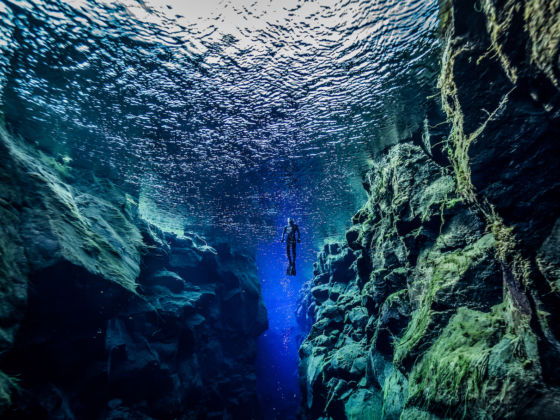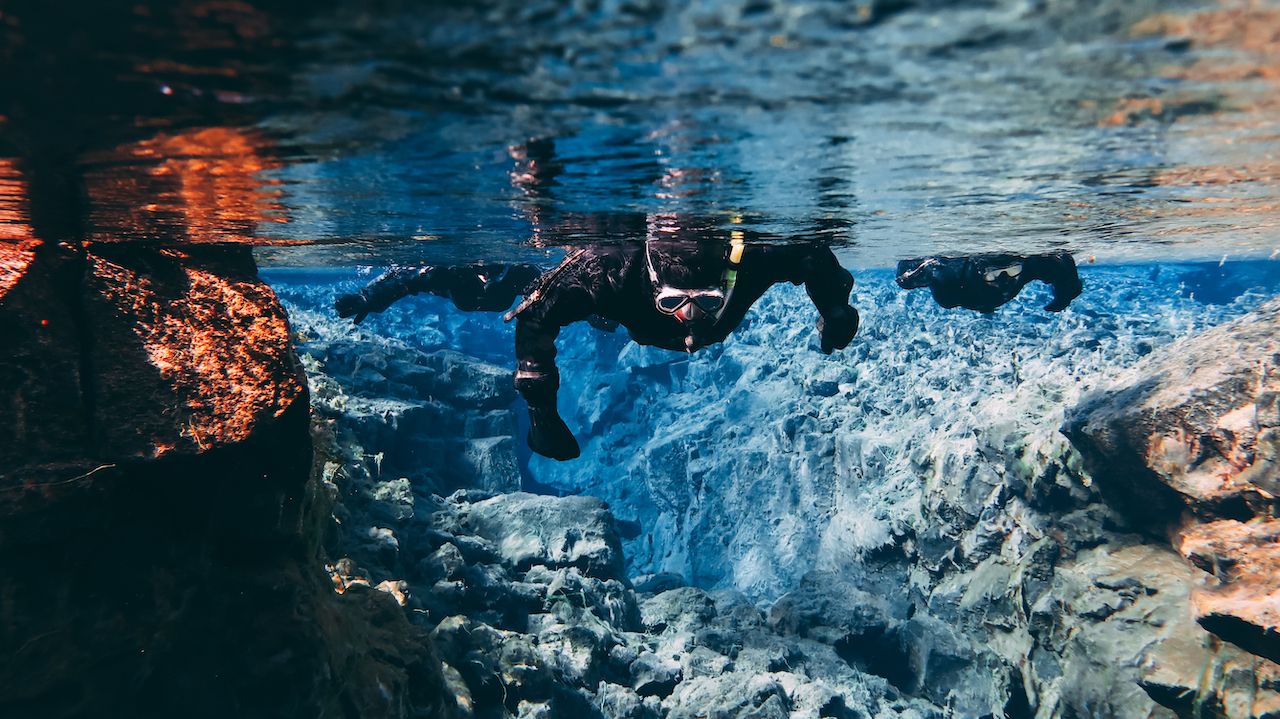If you’re an avid scuba diver, you may be looking ahead to this new year and planning your next big adventure. But 2020 is a new decade, and you may feel like the significance of that fact calls for a different type of underwater experience. Maybe it’s diving that puts environmental concerns upfront. Perhaps you want to explore unexpected dive sites, or maybe you just want to put your skills to the test in really challenging types of dives. To help you decide, here are the best new trends and locations to dive, with options for every certification and skill level. So read on to see where your underwater adventures may take you.


Night lights: Bioluminesce from the deep

Photo: Subphoto/Shutterstock
Some of the most exciting new experiences in scuba diving take place by torchlight. Don’t worry — night diving is not as scary as it sounds. Also, there are plenty of options to choose from, whether you prefer something mild, wild, or in between.
You probably didn’t know that most underwater organisms emit colorful, glowing UV light. Humans can’t see this spectrum of color without help. But using a special dive light and colored filter for your mask allows you to watch the reef naturally illuminate. The ultraviolet colors you’ll see form an incredible rainbow of neon. And nearly all animals, even plants and corals, give off their own stunning shades. A standard light will disrupt the UV experience, so you won’t use one during your dive. But you’ll be so mesmerized by the stunning array of colors that you’ll barely notice the extra darkness.
If diving with UV light sounds exciting, blackwater takes it to the next level. Unlike a regular night dive, this experience takes place in deep water with no topography like reef and rock to explore. Instead, divers are suspended over hundreds of feet of water using a rope or a line. Then, under cover of darkness, millions of small organisms rise from the ocean’s deep in search of food and light. Divers use a combination of standard and UV lights to catch a glimpse of these fascinating creatures as they slowly migrate toward the surface. Because blackwater diving can feel disorienting, it’s an activity best left for experienced night divers.
Marine conservation: Reef restoration and research

Photo: fenkieandreas/Shutterstock
One of the most exciting parts of scuba diving is getting up-close and personal with the ocean’s most impressive animals. And a marine conservation project is the best way to get to know these fascinating creatures. Just a few years ago, baited shark dives and swimming with captive dolphins were all the rage. But it’s 2020, and now we know better.
Rather than treating aquatic animals like a tourist attraction, marine conservation projects allow you to get hands-on in ways that help the ocean. Popular options include coral reef restoration in Fiji and Belize, shark and manta research in the Maldives, and sea turtle studies in Indonesia. It may seem strange to pay for a volunteer opportunity, but this type of diving funds vital scientific operations and provides divers with a once-in-a-lifetime opportunity. Not only do you get to observe some of the planet’s most impressive species in their natural habitat, but you’re also doing your part to protect them for future generations.
The hottest trend in conservation diving is the chance to spend a week or more at sea, conducting research with working scientists. These liveaboard dive trips take place in some of the world’s most remote diving destinations like Mexico’s Revillagigedo Islands and Indonesia’s Komodo National Park. Liveaboard diving is a great way to maximize your tanks per day on a dive trip, and these voyages typically include seminars and classes after each dive day. Plus, one of the biggest perks of liveaboard diving is getting to spend time around other divers. Who knows, you might meet a new dive buddy or two.
Faraway places: Unlikely dive spots

Photo: Angelo Giampiccolo/Shutterstock
As diving becomes more and more popular, so do some of the sport’s most impressive sites. So you’ll have to go a little further off the beaten path if you don’t want to share. Of course, traditional diving areas are still fun, but they can eventually become “over-dived.” If you don’t mind a little extra time in transit, opt for a trip to one of the planet’s hottest new diving destinations, minus the tourist crowds.
When you think of Sudan, you might not automatically associate the destination with diving. But these waters have been home to recreational and research-based dive trips for decades. In fact, Jacque Cousteau’s underwater research center, the Conshelf, is now one of the region’s most exciting sites. And if you’re up for more adventure, there’s plenty nearby. Port of Sudan is home to some of the Red Sea’s best-preserved shipwrecks. Just offshore, the underwater landscape transforms into plummeting, near-vertical walls. These deepwater sites are perfect for spotting sharks, rays, and other large marine animals.
Once a nuclear test site for the US government, the Bikini Atoll was all but abandoned for decades. This chain of islands is one of the remote diving destinations on the planet, with only a handful of liveaboards visiting each year. And, thanks to spending all that time forgotten by the world, the atoll boasts some of the healthiest coral gardens you’ll ever see. While you’re absolutely guaranteed to be blown away by this region’s reef diving, the real attraction is its legendary “ghost fleet.” The hulking wrecks of submarines, aircraft carriers, and battleships lay at the bottom of the lagoon, waiting to be explored. These are some of the world’s best-preserved and least-dived wrecks, littered with WWII relics and artifacts.
Extreme environments: Cold and crystal clear

Photo: VicPhotoria/Shutterstock
When it comes to dive travel, most people automatically expect crystal-clear, tropical blue water. Warm-water environments aren’t the only thrilling marine ecosystems waiting to be explored, though. If you aren’t afraid of a little chill, 2020 might be your year to take the plunge in a slightly cooler climate. Coldwater dive sites can be surprisingly biodiverse and often boast nearly endless visibility. So while you might need an extra certification or two and some additional time in transit, these regions are well worth the effort.
If you have never heard of the Silfra gap, this dive site in Iceland is unlike any other. Silfra is a freshwater site, fed by glaciers. So, the water maintains a temperature below freezing but never solidifies. For this same reason, it’s some of the clearest water on the planet — with visibility over 300 feet. The gap itself is a crack or fissure between the North American and Eurasian tectonic plates. So, you can actually reach out and touch two different continents during your dive. One of the most memorable parts of this experience is being pushed along by the gentle current passing through the crack. All you have to do is float and watch both sides of the world go by.
There is also incredible diving to be done on the planet’s two polar extremes. These are some of the wildest places in the world, both above and below water. Antarctic diving is all about close encounters with stunning wildlife. Here, penguins and seals are the stars of the show, but fascinating underwater ice formations sweeten the deal. These nutrient-rich waters attract other wildlife like whales and walruses, typically seen from the surface. By contrast, Arctic diving focuses more on topography. Arctic divers can explore the undersides of glaciers and icebergs, or even try an immersion below sheets of ice. In between dives, be sure to keep your eyes on the horizon. You never know when a pod of orcas might pass through.